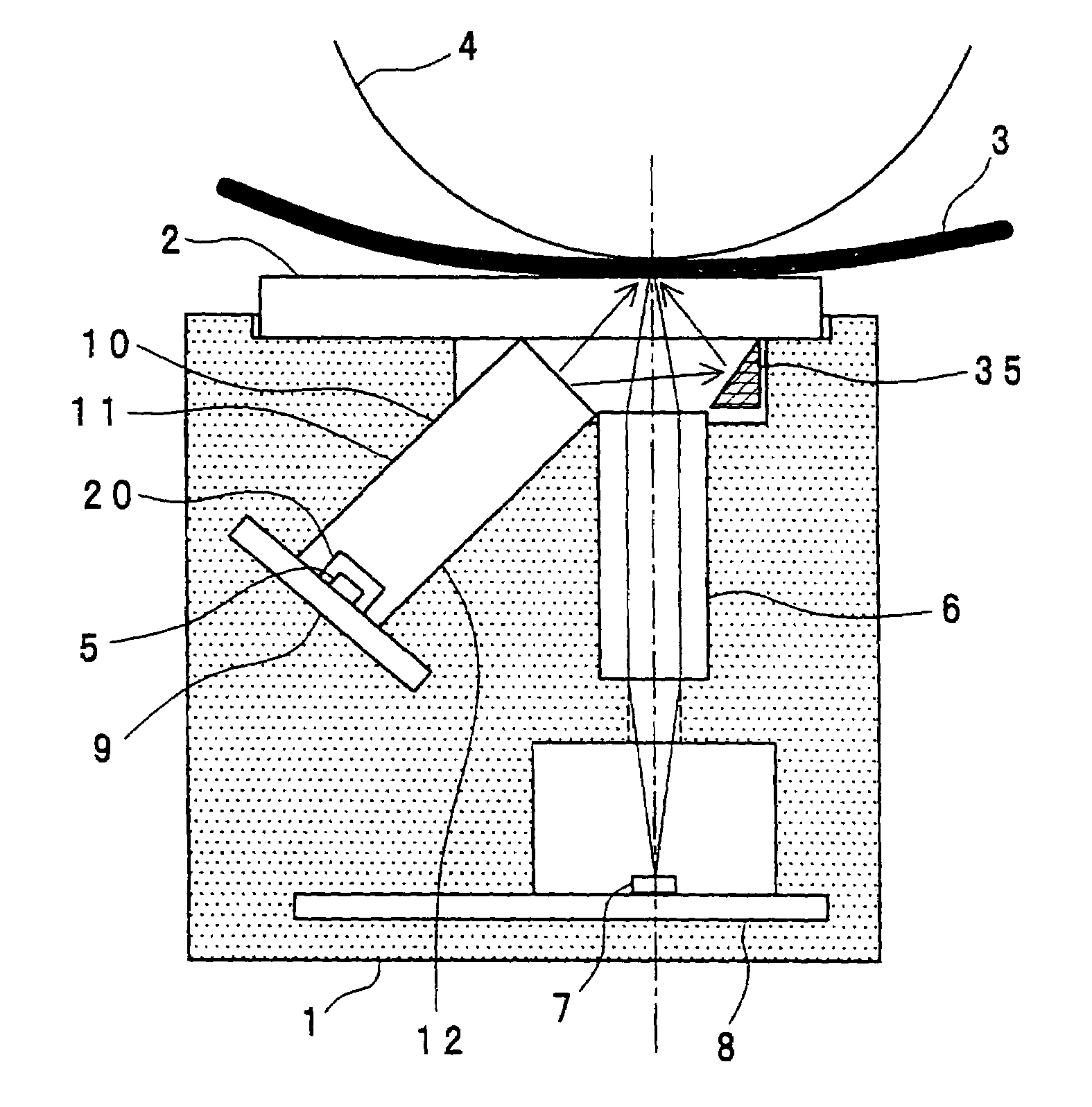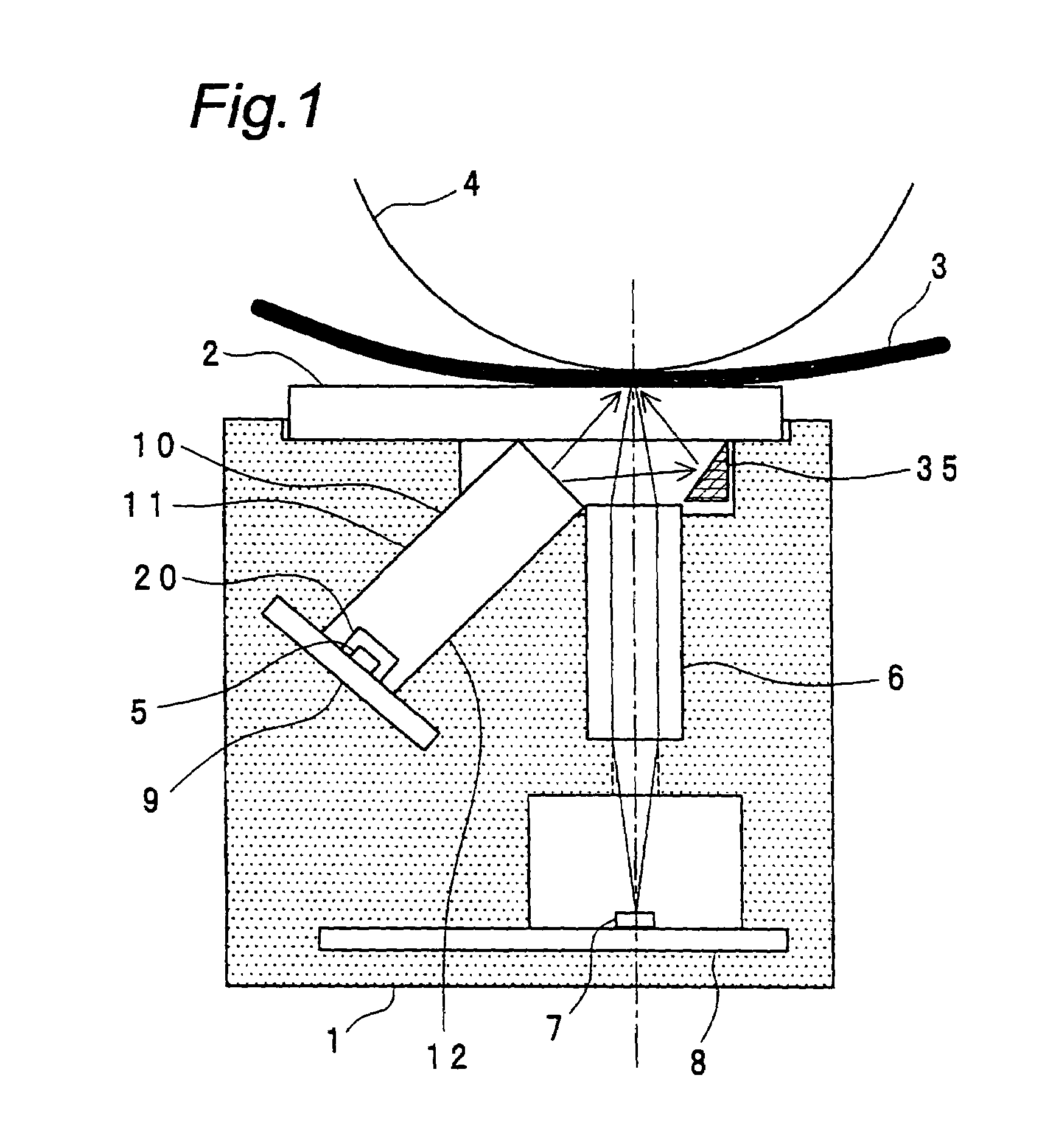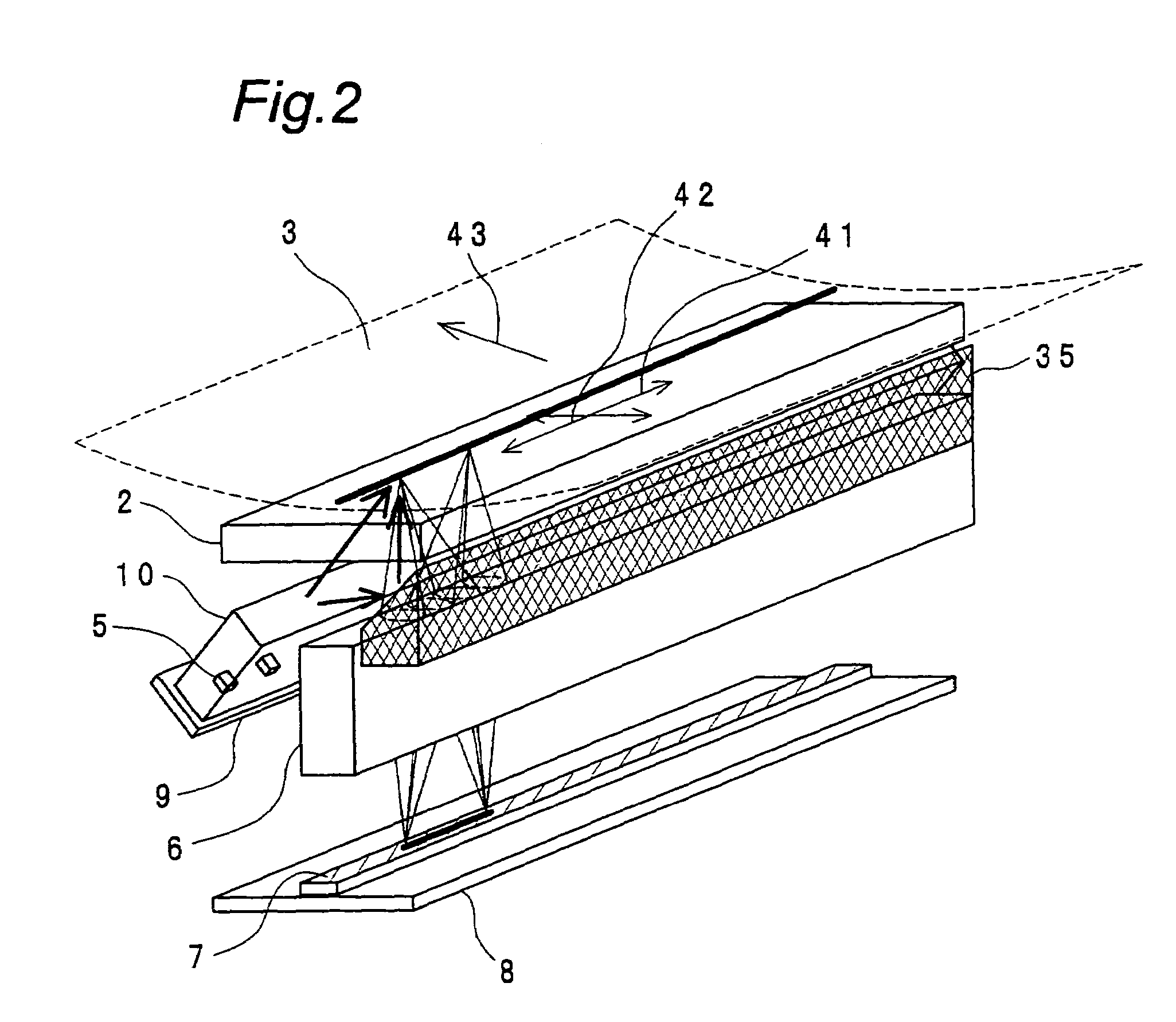Image-reading apparatus
a technology of image-reading apparatus and led light, which is applied in the direction of discharge tube/lamp details, optical elements, instruments, etc., can solve the problems of poor linear reading efficiency, limited number of leds to be increased in order to enhance illumination intensity, and difficulty in efficiently guiding light to the surface of documents, etc., to prevent the reading of wrinkles on documents, correct reading, and efficient light emitted
- Summary
- Abstract
- Description
- Claims
- Application Information
AI Technical Summary
Benefits of technology
Problems solved by technology
Method used
Image
Examples
embodiment 2
[0046]FIG. 4 shows a sectional view of an image-reading apparatus according to the second embodiment of the present invention, taken along the shorter axial direction thereof (i.e., the sub-scanning direction). The second embodiment shown in FIG. 4 is practically the same one as the first embodiment shown in FIG. 1. Therefore, the description of the same parts is omitted by denoting them with the like reference numerals.
[0047]In the image-reading apparatus according to the second embodiment, the light-guiding means (10) has a ninth face (21) and a tenth face (22) between the first face (11) and the light outgoing face thereof and between the second face (12) and the light outgoing face thereof, respectively. The ninth face (21) and the tenth face (22) form predetermined angles with the first face (11) and the second face (12), respectively.
[0048]In addition, the substrate (9) having a light source mounted thereon is not orthogonal to the first face (11) and the second face (12), unl...
embodiment 3
[0050]FIG. 5 shows a sectional view of an image-reading apparatus according to the third embodiment of the present invention, taken along the shorter axial direction thereof (i.e., the sub-scanning direction). The third embodiment shown in FIG. 5 is practically the same one as the first embodiment shown in FIG. 1 or the second embodiment shown in FIG. 4. Therefore, the description of the same parts is omitted by denoting them with the like reference numerals.
[0051]In the image-reading apparatus according to the third embodiment, the light source (5) is disposed on the same substrate together with the line sensor IC (7), by adjusting the lengths and angles of the first face (11), the second face (12), the ninth face (21) and the tenth face (22) of the light-guiding means (10). In other words, the substrate having the light source mounted thereon and the substrate (8) having the sensor mounted thereon are formed integrally with each other.
[0052]By doing so, the number of the component...
embodiment 4
[0061]FIG. 10 shows a sectional view of a light-guiding means (10) to be used in an image-reading apparatus according to the fifth embodiment of the present invention, taken along the shorter axial direction of the light-guiding means (i.e., the sub-scanning direction). FIG. 11 shows a sectional view of a light-guiding means (10) as a comparative example, taken along the shorter axial direction thereof.
[0062]As shown in FIG. 11, the light-guiding means (10) is formed having a section in the shape of a simple rectangular parallelopiped (or a part thereof) at and around the substrate (9) having the light source mounted thereon, when taken along the shorter axial direction thereof. Particularly in such a case, when light from the light source (5) enters the light-guiding means (10), parts of the light fluxes which reach the first face (11) and the second face (12) of the light-guiding means (10) have angles smaller than the angles which satisfy the total reflection condition (about 45°...
PUM
 Login to View More
Login to View More Abstract
Description
Claims
Application Information
 Login to View More
Login to View More - R&D
- Intellectual Property
- Life Sciences
- Materials
- Tech Scout
- Unparalleled Data Quality
- Higher Quality Content
- 60% Fewer Hallucinations
Browse by: Latest US Patents, China's latest patents, Technical Efficacy Thesaurus, Application Domain, Technology Topic, Popular Technical Reports.
© 2025 PatSnap. All rights reserved.Legal|Privacy policy|Modern Slavery Act Transparency Statement|Sitemap|About US| Contact US: help@patsnap.com



